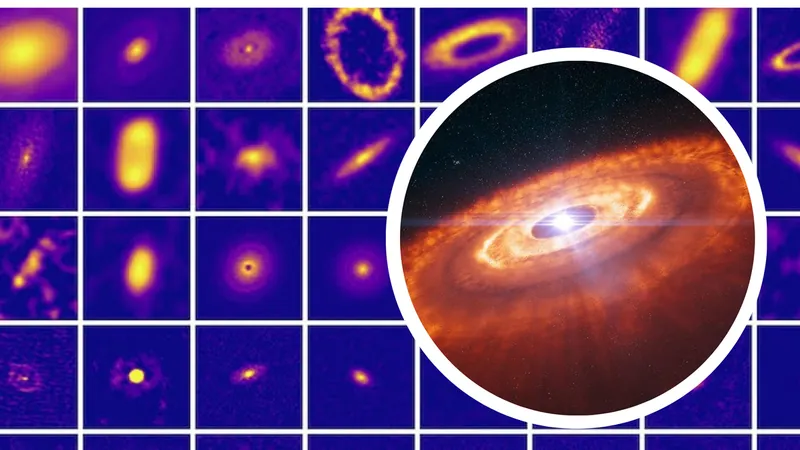
Exoplanet Nurseries Surrounding Young Stars are Smaller Than Previously Imagined: A Groundbreaking Revelation!
2025-03-28
Author: John Tan
Introduction
Astronomers have made a surprising discovery regarding the formation of planets in the universe: the clouds of gas and dust, known as protoplanetary disks, encircling newly formed stars are often far smaller than scientists had anticipated. Remarkably, some of these disks are compact enough to fit within the orbit of Earth around the sun.
Research Findings
Utilizing the powerful Atacama Large Millimeter/submillimeter Array (ALMA) in Chile, researchers observed 73 protoplanetary disks in the Lupus region, located approximately 400 light-years away in the constellation Scorpius, known for its active star formation. Their findings suggest that many young stars, particularly red dwarfs—which make up about 70% of our galaxy's stellar population—are capable of hosting these diminutive disks.
Expert Opinions
Paola Pinilla, a researcher at the University College of London (UCL) Mullard Space Science Laboratory, expressed her amazement at the results: "It is astonishing to discover that protoplanetary disks can be this small and that they are so prevalent. Our previous view of planet formation was skewed towards observing larger, more luminous disks."
Paradigm Shift
In stark contrast to previous assumptions suggesting that protoplanetary disks typically extend outward beyond the orbit of Neptune, the current study reveals that smaller disks are not just common but likely represent the norm in planetary formation. Team leader Osmar Guerra-Alvarado from Leiden University emphasized this paradigm shift: "Only the brightest disks show significant gaps; the smaller, compact disks without such features are much more prevalent."
Implications for Super-Earths
These findings have interesting implications for the existence of a specific type of exoplanet known as super-Earths. Super-Earths are rocky worlds that have masses between two and ten times that of Earth, and the research indicates that the compact disks around low-mass stars might create the ideal conditions for their formation. Mariana Sanchez of Leiden Observatory pointed out that the dust tends to be concentrated close to the star, a region where super-Earths are typically found.
Challenging Conventional Theories
Understanding the properties of these disks challenges conventional theories regarding the development of planets in the solar system. Historically, larger disks have been linked to the formation of gas giants like Jupiter and Saturn. In contrast, the prevalence of smaller disks may result in a lower likelihood of forming massive planets.
Observational Outcomes
Nienke van der Marel, another team member at the Leiden Observatory, stated, "The majority of small disks do not exhibit gaps, indicating that many stars may not host giant planets. This aligns with what we observe in the demographics of exoplanets that orbit mature stars."
Conclusion
As researchers sift through these findings, a crucial connection between protoplanetary disks and the types of exoplanets that emerge around stars is becoming clearer. This research challenges the long-standing bias towards larger disks and encourages a more comprehensive study of all disk sizes.
The team's groundbreaking work was published recently on the preprint repository arXiv, underscoring that our understanding of star and planet formation is still evolving. This extraordinary revelation not only reshapes our comprehension of planetary formation but also opens doors to potential new discoveries about the nature and prevalence of planets across the galaxy!


 Brasil (PT)
Brasil (PT)
 Canada (EN)
Canada (EN)
 Chile (ES)
Chile (ES)
 Česko (CS)
Česko (CS)
 대한민국 (KO)
대한민국 (KO)
 España (ES)
España (ES)
 France (FR)
France (FR)
 Hong Kong (EN)
Hong Kong (EN)
 Italia (IT)
Italia (IT)
 日本 (JA)
日本 (JA)
 Magyarország (HU)
Magyarország (HU)
 Norge (NO)
Norge (NO)
 Polska (PL)
Polska (PL)
 Schweiz (DE)
Schweiz (DE)
 Singapore (EN)
Singapore (EN)
 Sverige (SV)
Sverige (SV)
 Suomi (FI)
Suomi (FI)
 Türkiye (TR)
Türkiye (TR)
 الإمارات العربية المتحدة (AR)
الإمارات العربية المتحدة (AR)